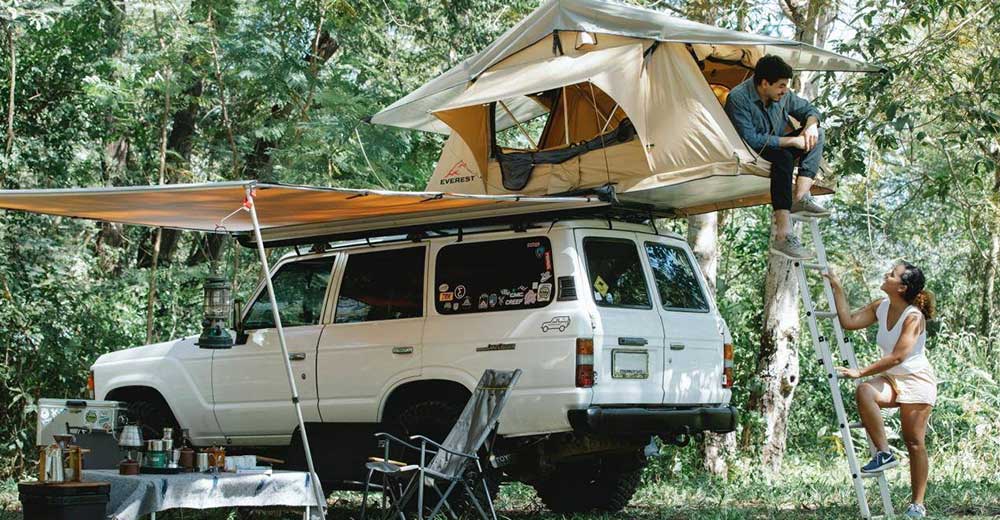A power inverter changes DC power from a battery into conventional AC power that you can use to operate all kinds of devices … electric lights, kitchen appliances, microwaves, power tools, TVs, radios, computers, to name just a few. You just connect the inverter to a battery, and plug your AC devices into the inverter … and you’ve got portable power … whenever and wherever you need it.
Going camping doesn’t have to mean going without all of your electronics. Thanks to power inverters, you can still use your favorite electronic devices as long as you’re camping near your car. A power inverter takes electricity from your car, and it allows you to plug in your laptop, phone charger, fan, and almost any other basic household device.
If you only plan on using a power inverter to charge your phone or laptop, you don’t need a high-wattage inverter. Campers who want to use an inverter to run a coffee maker, air compressor, or other household appliance will need an inverter that can handle thousands of watts.
Your car’s battery runs on DC or direct current. Devices like your laptop use alternating current or AC. An inverter changes the DC power to AC, allowing you to plug in your electronics when you’re on the road. If you want to use electricity while camping without running your car simultaneously, you need more than an inverter. You will also need a power station, a portable, rechargeable battery.
You can enjoy movies under the stars with a TV or laptop, or surprise your whole campsite with fresh coffee in the morning. You can even charge your digital camera for a photo shoot in nature. The possibilities are practically endless.
Be sure to check how many watts your devices use before you plug them into the inverter. You can typically find the wattage listed on the appliance. In general, devices that produce more heat require more power.

You can take several steps to make sure your camping experience is as safe as possible when using a power inverter.
When deciding the wattage of your inverter, it’s best to choose an inverter with 20% more power than you need. You’re less likely to overload your inverter if you follow that rule.
Make sure you’re looking at the continuous watts of your inverter, not the surge watts. The inverter can’t sustain the surge watts for very long, and you should only use that amount for starting an appliance.
For continual use, refer to your inverter’s continuous watts (if your inverter doesn’t specify which wattage is which, the continuous watts are usually the smaller number).
Finally, don’t run your inverter without your car’s engine running. The inverter won’t drain your car’s battery immediately, but it’s best to err on the side of caution and not risk it. If you absolutely must use your inverter with your car off.
Power inverters make camping more convenient and comfortable. They allow you to run household appliances and charge your electronics, and the only limit you have to worry about is your inverter’s maximum watt output.